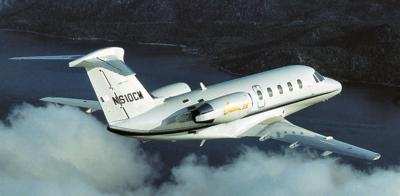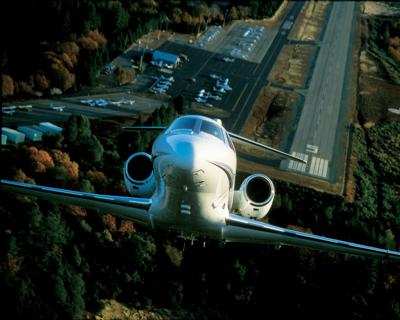Aircraft Responded Poorly To Control Inputs
There are few more fear-inducing issues, in-flight, than an
aircraft that does not seem to be responding to control. A 1995
Citation VII exhibited just such issues on a December 28th flight
starting and ending in Ft. Lauderdale, FL. The crew worked through
a number of scenario before getting the aircraft on the ground but
based on the limited data here, this flight could have gone FAR
worse. We're looking forward to more data as to what caused the
issues this crew experienced. The flight was reportedly in the
air just a tad over ten minutes...

NTSB Identification: ERA12FA127
14 CFR Part 91: General Aviation
Accident occurred Wednesday, December 28, 2011 in Ft. Lauderdale,
FL
Aircraft: CESSNA 650, registration: N877G
Injuries: 8 Uninjured.
This is preliminary information, subject to change, and may
contain errors. Any errors in this report will be corrected when
the final report has been completed.
On December 28, 2011, about 0950 eastern standard time, a Cessna
650, N877G, was substantially damaged when it impacted an airport
perimeter fence while returning for landing at Fort Lauderdale
Executive Airport (FXE), Fort Lauderdale, Florida. The two
crewmembers and six passengers were not injured. The airplane had
just taken off from FXE in visual meteorological conditions on an
instrument flight rules flight plan to Teterboro Airport (TEB),
Teterboro, New Jersey. The personal flight was operating under the
provisions of 14 Code of Federal Regulations Part 91.
According to the first officer, the takeoff roll and rotation
from runway 26 were normal, but once airborne, the airplane began
rolling to the right. Positive-rate climb was called, but the
landing gear remained down and the flaps remained at 20 degrees.
The first officer noticed that the captain was having "extreme"
difficulty in rolling the airplane level, but eventually
accomplished it through rudder and asymmetric thrust. As the right
turn brought the airplane around to runway 13, the captain was able
to land long, but the airplane then left the runway and impacted
the airport perimeter fence. The first officer also noted that
there were no warning lights or advisories in the cockpit during
the event.

In a written statement, the captain noted that the preflight
examination of the airplane was normal, as were the pre-takeoff
checks, including the ailerons and all flight control surfaces.
After taking off and obtaining a positive rate of climb, the
captain found that he needed a "little left control;" then the
airplane started a slow right turn which he could not stop. The
captain then found that he needed differential thrust and rudder to
keep the airplane from rolling over, and as he kept adjusting both,
another runway came into view, and he completed the landing.
In a follow-up telephone interview, the captain further stated
that as the airspeed increased, the airplane tended to roll more.
He recalled thinking that the airplane might have had a flap
misconfiguration, but there were no lights or warnings. As he
reduced power, the right wing would start to come back up, and as
he added differential thrust to maintain altitude, airspeed would
increase and the right wing would then fall again. The captain
found himself going through the same series of actions over and
over again to maintain flight, and as he did so, he saw that the
airplane was gradually lining up with runway 13 through the right
window. As the airplane came around toward the runway, the captain
felt that he only had a "one time shot," and did the best he could
to get the airplane onto the runway.
The first officer and a passenger estimated that the maximum
roll angle approached 90 degrees of bank.
The airplane was subsequently examined in a hanger, where
leading edge wing damage, a slice through the top outer skin and
ribs of the cabin, and the nose wheel bent back into the pressure
hull with compromised hydraulic lines were documented. Although the
captain's yoke pedestal was jammed against the seat, control
continuity was confirmed from the cockpit to all flight control
surfaces. The flaps remained in the 20-degree position, and all
four spoilers on each wing were flush with the wing.

The hydraulic lines in the nose well were subsequently capped
and 3,000 pounds of pressure to the hydraulic system were supplied
via a hydraulic ground power unit. As soon as the hydraulic
pressure was supplied, the right wing roll spoiler (the outermost
most of the four spoilers, located next to the aileron) extended
upwards 7.9 degrees. Multiple left-right applications of the flight
controls, with the hydraulic ground power unit both on and off,
resulted in the roll spoiler being extended normally, but returning
to a resting position 7.8 to 7.9 degrees above the flush position.
A final attempt at exercising the controls resulted in the roll
spoiler coming to rest 5.5 degrees above the flush position.
During one of the flight control tests, the spoiler hold-down
switch was activated. The right wing roll spoiler then locked down,
but when the switch was deactivated, it returned to 7.8 degrees
above the flush position.
In preparation for confirmation of proper rigging, an attempt
was made to secure the right roll spoiler bellcrank with an
alignment pin. As the pin contacted the bellcrank, the bellcrank
snapped into a different position which then lowered the roll
spoiler to the flush position. The bellcrank and the hydraulic
actuator for the right roll spoiler were retained for further
examination.
 ANN's Daily Aero-Linx (05.06.25)
ANN's Daily Aero-Linx (05.06.25) ANN's Daily Aero-Term (05.06.25): Ultrahigh Frequency (UHF)
ANN's Daily Aero-Term (05.06.25): Ultrahigh Frequency (UHF) ANN FAQ: Q&A 101
ANN FAQ: Q&A 101 Classic Aero-TV: Virtual Reality Painting--PPG Leverages Technology for Training
Classic Aero-TV: Virtual Reality Painting--PPG Leverages Technology for Training Airborne 05.02.25: Joby Crewed Milestone, Diamond Club, Canadian Pilot Insurance
Airborne 05.02.25: Joby Crewed Milestone, Diamond Club, Canadian Pilot Insurance





